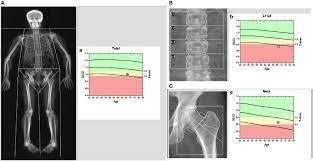A client tells the nurse, "I have intense stomach pain for 3 hours after eating." On assessment the nurse finds abdominal pain and tenderness of the abdomen. The nurse suspects duodenal ulcers in the client. Which diagnostic procedure does the primary health-care provider least likely recommend?
Biopsy
Urea breath test
Endoscopy
Computed tomography (CT) scan
The Correct Answer is D
Choice A rationale: Biopsy during an endoscopy can help confirm the presence of duodenal ulcers by analyzing tissue samples.
Choice B rationale: Urea breath test is used to detect the presence of Helicobacter pylori, a bacterium associated with duodenal ulcers.
Choice C rationale: Endoscopy is a standard procedure for diagnosing duodenal ulcers by directly visualizing the upper gastrointestinal tract.
Choice D rationale: While a CT scan can be useful in some cases, it's less commonly used for diagnosing duodenal ulcers compared to other diagnostic methods like endoscopy,
biopsy, or urea breath test.
Nursing Test Bank
Naxlex Comprehensive Predictor Exams
Related Questions
Correct Answer is B
Explanation
Choice A rationale: This test is not specific for confirming osteoporosis.
Choice B rationale: This test is called a bone mineral density (BMD) test or a dual-energy X-ray absorptiometry (DXA) scan. It measures how much calcium and other minerals are in a segment of bone.
Choice C rationale: This test is not specific for confirming osteoporosis.
Choice D rationale: This test is not specific for confirming osteoporosis.

Correct Answer is A
Explanation
Choice A rationale: candidiasis - The described symptoms of inflammation, cottage
cheese-like discharge, and vaginal/vulvar inflammation are indicative of a yeast infection or candidiasis.
Choice B rationale: Chlamydia - Chlamydia often presents with different symptoms such as discharge, but it's not typically associated with a cottage cheese-like appearance.
Choice C rationale: bacterial vaginosis - Bacterial vaginosis typically presents with a different type of discharge, often described as "fishy" smelling, rather than a cottage cheese appearance.
Choice D rationale: trichomoniasis - Symptoms of trichomoniasis usually include frothy, malodorous discharge, not consistent with the described cottage cheese-like discharge.
Whether you are a student looking to ace your exams or a practicing nurse seeking to enhance your expertise , our nursing education contents will empower you with the confidence and competence to make a difference in the lives of patients and become a respected leader in the healthcare field.
Visit Naxlex, invest in your future and unlock endless possibilities with our unparalleled nursing education contents today
Report Wrong Answer on the Current Question
Do you disagree with the answer? If yes, what is your expected answer? Explain.
Kindly be descriptive with the issue you are facing.
